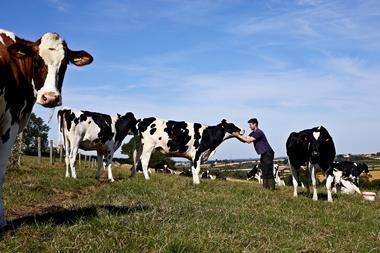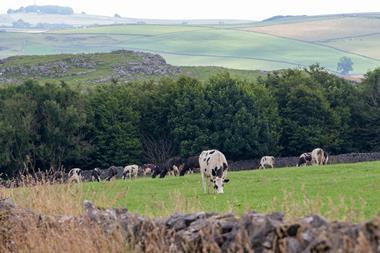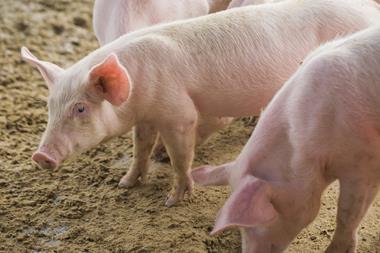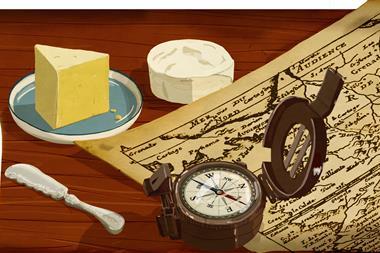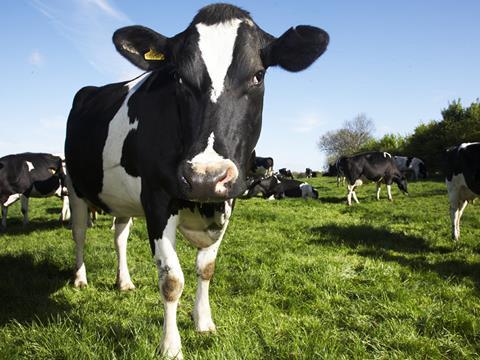
A downturn in big-population economies in east and south-east Asia could adversely impact UK dairy export opportunities, trade analysts have warned.
The region has long been marked out as a growth market for dairy exporters. “Economic and population growth, and a shift towards higher-value foods and livestock products are expected to continue to drive the projected increase in import demand for dairy products in many Asian countries”, the OECD and FAO said, in a recent overview of global food production.
And as people gradually benefit from growing economies, they get “a bit more disposable income, they buy more white goods, then they start to buy more dairy”, said David Swales, head of strategic insight at levy board AHDB, discussing prospects for British dairy exporters.
Since 2010, the GDP of the east Asia and Pacific region, as defined by the World Bank, grew by between 4% and 7.6% each year aside from 2020 – a write-off for most economies due to pandemic lockdowns.
But the outlook for the world economy has been dimming. In July the IMF cut its global GDP expansion forecast from 3.6% to 3.2%.
Trade-dependent Asia has started to feel the effect. The IMF’s sister body, the World Bank, said in August that region-wide projections would “slow to 3.2% this year from 7.2% in 2021”.
“The global economic slowdown is beginning to dampen demand for the region’s exports of commodities and manufactured goods,” the Bank warned.
Capital Economics last week described the latest Asian trade statistics as “very weak”. “With the global economy heading for recession, we think the worst is still to come,” said CE analyst Gareth Leather.
The secretariat of APEC, a 21-country Asia-Pacific economic body, said in August that GDP growth was “expected to slow this year amid soaring inflation, a protracted war in Ukraine and heightened uncertainties, on top of the continuing impact of the pandemic”.
And while inflation in “emerging Asia” had been “benign compared to other regions”, according to Fitch Solutions, by the second half of 2022 it had started to pick up. In any case, region-wide inflation in the first six months of the year reached its highest since the global financial crisis of 2008, according to APEC.
British dairy’s international treasure hunt: a quest to find export markets
As the US has hiked interest rates to try and tackle inflation, it has meant a stronger dollar – putting pressure on other currencies.
“Rising inflation abroad has provoked interest rate increases, which in turn have caused capital outflows and currency depreciations in some east Asia and Pacific countries,” the World Bank said.
Weakened currencies, S&P Global Ratings warned last month, would “add to imported inflation at a time when the Russia-Ukraine conflict and supply chain problems are contributing to elevated input prices”.
The inflationary headwinds meant Asia-Pacific dairy businesses faced what S&P Global Ratings said earlier were “narrower margins, slimmer cash flows, higher working capital, and weakening consumer demand in some niches”.
If dairy business in the region were set to face challenges, the same could be said of competitors from further afield who want to export more to Asia.
Dutch dairy giant FrieslandCampina noted in its latest half-year report that Chinese dairy imports fell by 16% in the first five months of the year compared with the same period in 2021.
That was in part down to swelling domestic production, which, similar to China’s rebuilding of its domestic pork sector after an ASF scare, has squeezed out imports. The drop in demand was also down to what Mintec dairy analyst Jose Saiz said was the effect of the country’s “Zero covid” policies, which meant continued use of strict lockdowns in huge port cities such as Shanghai.
And Rabobank dairy analyst Richard Scheper said would-be consumers of dairy in developing economies are “vulnerable to inflation as they spend a large percentage of their disposable income on food”.
That could feed into demand for dairy if shoppers in regions such as south-east Asia – who, as the recent OECD-FAO report had it, were not in the past big dairy consumers – are forced to cut back.
“We could see declining demand in those markets if the current situation continues,” Scheper said.The region has long been marked out as a likely growth market for UK exporters,







